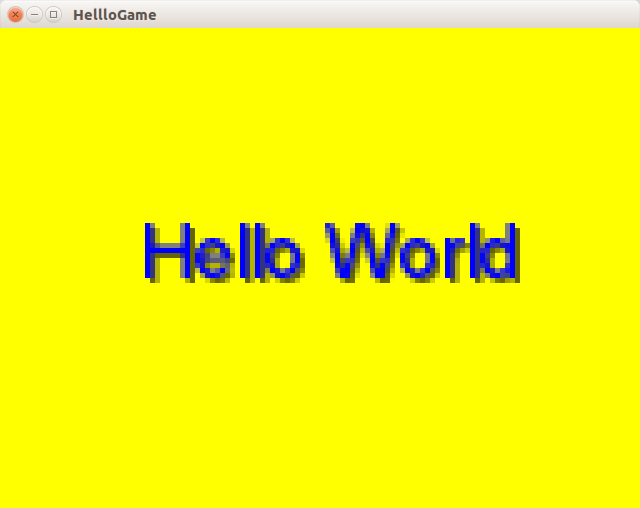- Java Development Kit, from Oracle site
- ADT Bundle, from Android Developer site, unzip it (includes eclipse)
- Open up Eclipse from the eclipse folder.
- Go to Help menu and Install New Software...
- In Work with:, enter site: http://dist.springsource.com/release/TOOLS/gradle
- Download Eclipse Integration Gradle.
- From http://libgdx.badlogicgames.com/download.html, download setup app (a jar file).
After clicking on Generate and getting the successful message, these are the contents:
Now I can open eclipse included in the ADT bundle, and select File -> Import Grade > Import Gradle Project and select the files:
Running the file right now, right clicking on the desktop package and running as Java application, we get:
This is the default java file displaying a Texture:
package com.tutorial.helloGame;
import com.badlogic.gdx.ApplicationAdapter;
import com.badlogic.gdx.Gdx;
import com.badlogic.gdx.graphics.GL20;
import com.badlogic.gdx.graphics.Texture;
import com.badlogic.gdx.graphics.g2d.SpriteBatch;
public class HellloGame extends ApplicationAdapter {
SpriteBatch batch;
Texture img;
@Override
public void create () {
batch = new SpriteBatch();
img = new Texture("badlogic.jpg");
}
@Override
public void render () {
Gdx.gl.glClearColor(1, 0, 0, 1);
Gdx.gl.glClear(GL20.GL_COLOR_BUFFER_BIT);
batch.begin();
batch.draw(img, 0, 0);
batch.end();
}
}
This is the HelloWorld program using the BitmapFont:
package com.tutorial.helloGame;
import com.badlogic.gdx.ApplicationAdapter;
import com.badlogic.gdx.Gdx;
import com.badlogic.gdx.graphics.GL20;
import com.badlogic.gdx.graphics.OrthographicCamera;
import com.badlogic.gdx.graphics.g2d.BitmapFont;
import com.badlogic.gdx.graphics.g2d.SpriteBatch;
public class HellloGame extends ApplicationAdapter {
OrthographicCamera camera;
SpriteBatch batch;
BitmapFont font;
float w,h;
@Override
public void create () {
w = Gdx.graphics.getWidth(); // width of screen
h = Gdx.graphics.getHeight(); // height of screen
camera = new OrthographicCamera(); // 2D camera
camera.setToOrtho(false, w, h); // y increases upwards, viewport = window
batch = new SpriteBatch(); // batch drawing
font = new BitmapFont(); // no parameters - thus default 15-pt Arial
font.setColor(0.0f, 0.0f, 1.0f, 1.0f); // blue font
font.setScale(5); // font scaled up
}
@Override
public void render () {
Gdx.gl.glClearColor(1, 1, 0, 1); // Clear color is yellow
Gdx.gl.glClear(GL20.GL_COLOR_BUFFER_BIT); // Clear buffer with Clear color
batch.setProjectionMatrix(camera.combined); // Set Projection Matrix
batch.begin(); // begin drawing
font.draw(batch, "Hello World", w/2-180, h/2+50); // Draw the Hello World text
batch.end(); // end drawing
}
@Override
public void dispose() {
batch.dispose(); // remove batch when app ending
font.dispose(); // remove font when app ending
}
}Result:





Very useful, thanks a lot. A little offer is that give explanation of your code.
ReplyDeleteFor example; "OrthographicCamera is to be used in 2D environments only as it implements a parallel (orthographic) projection and there will be no scale factor for the final image regardless where the objects are placed in the world."
I took this definition on LibGDX github wiki :)